Half an hour’s journey out of London’s King’s Cross train station on the line towards Cambridge gets you to the world’s first garden city, Letchworth. A new town designed on visionary principles 100 years ago, it is now a delightful time bubble and a showcase of the Arts and Crafts architectural style. There haven’t been many garden cities since, but Letchworth’s influence on urban planning around the world has been immense.
The idea behind the garden city movement was for decent housing on a mass scale in pleasant surroundings, achieved in socially mixed, economically sustainable developments. Only three such “cities” were built in Britain, but Letchworth, Rosyth and Welwyn are all still thriving now. Since then, smaller-scale “garden suburbs” have been woven into town planning practice across the globe, Hampstead in North London being a prime example.
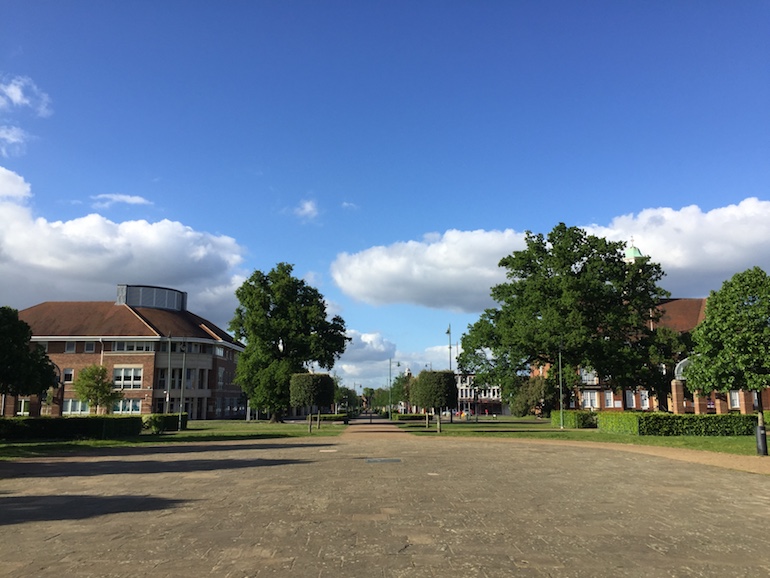 The town centre gardens, Letchworth. Photo Credit: © Alex Robinson.
The town centre gardens, Letchworth. Photo Credit: © Alex Robinson.
The Inspiration
Ebenezer Howard was the visionary who published Garden Cities of Tomorrow in 1902 and was the driving force behind the Garden City Association, which raised the money to buy the land to build Letchworth.
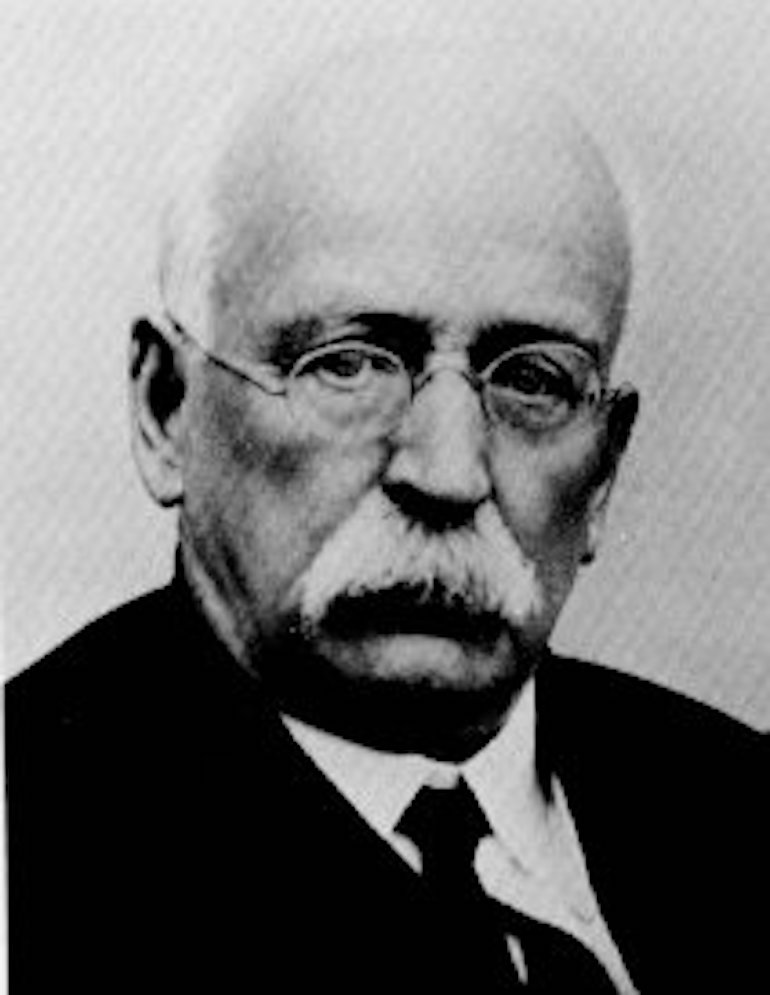 Ebenezer Howard – English urban planner and founder of the garden city movement. Photo Credit: © Public Domain via Wikimedia Commons.
Ebenezer Howard – English urban planner and founder of the garden city movement. Photo Credit: © Public Domain via Wikimedia Commons.
Howard, a shorthand reporter, had lived in Chicago and been deeply impressed by a visit to Riverside, one of the first planned suburbs in the USA, with its curving streets, retained trees and spacious town square. Frederick Law Olmsted was the landscape designer behind Riverside (and Central Park in New York). Howard returned to Britain with a supersized ambition.
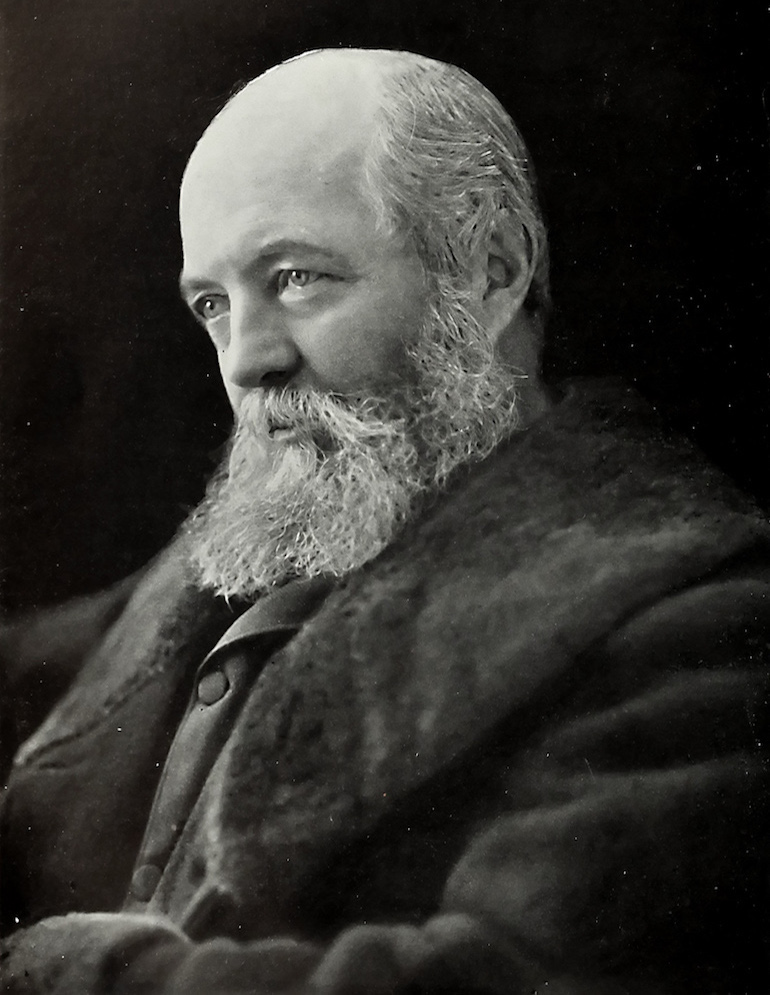 Portrait of Frederick Law Olmsted. Photo Credit: © Public Domain via Wikimedia Commons.
Portrait of Frederick Law Olmsted. Photo Credit: © Public Domain via Wikimedia Commons.
Arts and Crafts architects, Barry Parker and Raymond Unwin
Parker and Unwin were the architects who turned Howard’s theories into reality with the creation of Letchworth Garden City. In 1903 the pair won the commission to design the new town on new principles: low-density, high-quality housing for all; social mixing; land-use zoning and economic sustainability.
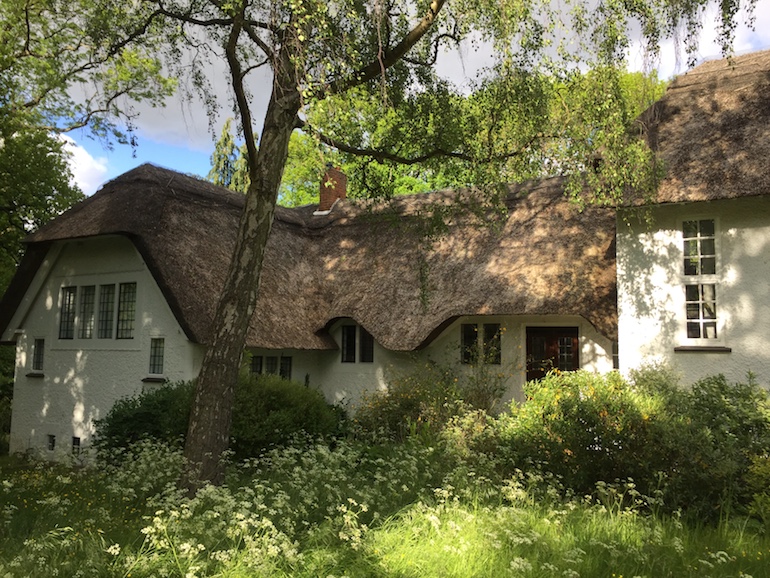 Parker Drawing Office & International Garden Cities Exhibition, Letchworth © Alex Hetherington.
Parker Drawing Office & International Garden Cities Exhibition, Letchworth © Alex Hetherington.
Parker and Unwin were leaders in Art and Crafts architecture, a style that revered skilled craftsmanship and looked back to a pre-industrial age. One of the first buildings to go up was, sensibly enough, the architects planning office from where they would design the rest. The office resembles a medieval thatched hall and contains features such as an inglenook fireplace, typical of Arts and Crafts.
£150 for a house!
Liftoff for Letchworth came with the Cheap Cottages Exhibition of 1905. Challenged to build a good house out of economic materials for a mere £150 while released from the usual planning restrictions, dozens of architects responded.
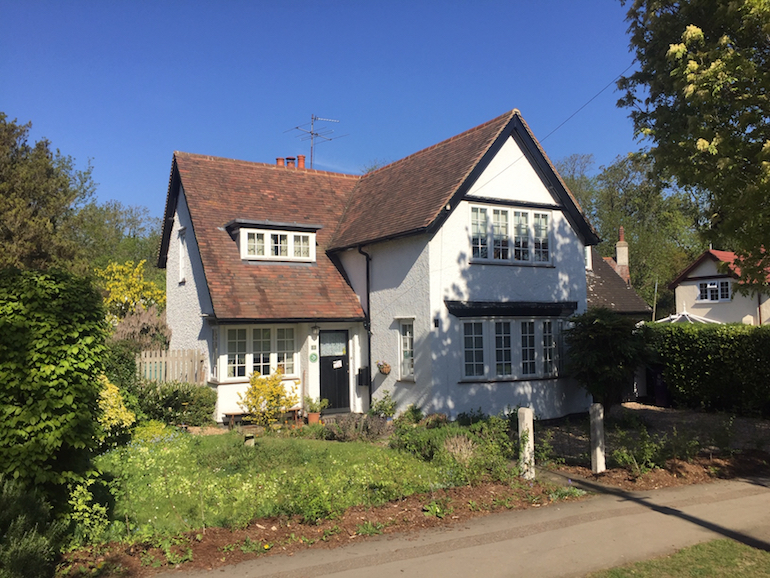 Letchworth 1905 £150 cottage. Photo Credit: © Alex Hetherington.
Letchworth 1905 £150 cottage. Photo Credit: © Alex Hetherington.
Many of the houses still stand strong today. Multiply the price 3,000 times and you might get close to today’s prices. 60,000 people came to visit the 1905 exhibition and Letchworth was on the map!
Into London – Hampstead Garden Suburb
Following Ebenezer Howard’s success at Letchworth, about 20 garden suburbs were founded in Britain during the first 15 years of the 20th century, each one on the edge of a major city. By far the most prestigious was Hampstead Garden Suburb in North London. Henrietta Barnett was the forceful personality behind the (attempted) proof that a socially mixed “village” community would thrive as a suburb of the capital city.
Rising star Raymond Unwin was paired with one of the era’s big names in architecture, Edwin Lutyens. Lutyens created the substantial houses and stylish apartment buildings around the large open Central Square. He went upscale for the suburb’s Anglican church, St. Jude’s, which has a spire dominating the high point in the landscape.
The houses and apartments in the new Hampstead Garden Suburb were so nice and the setting – high on the edge of Hampstead Heath overlooking London – was so fabulous that the middle classes flocked there. Prices rose as they bought up the homes, edging the artisans out. Henrietta Barnett’s social experiment was a victim of its own success.
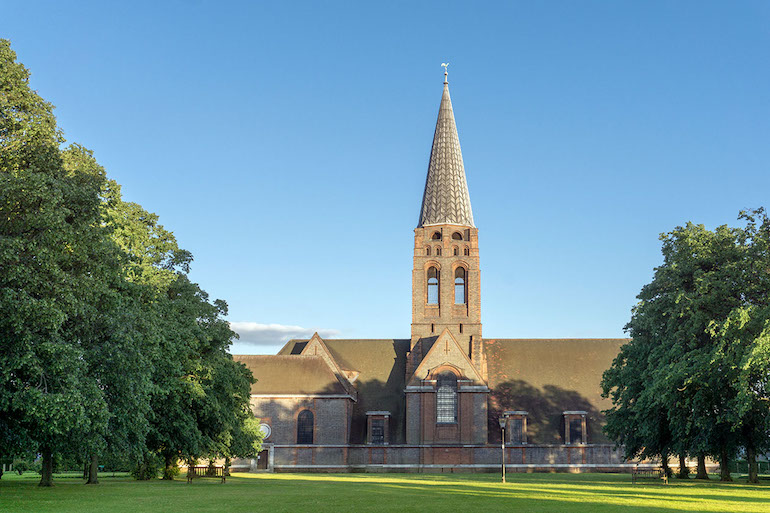 St Jude’s Church, Central Square, Hampstead Garden Suburb. Photo Credit: © Alex Robinson.
St Jude’s Church, Central Square, Hampstead Garden Suburb. Photo Credit: © Alex Robinson.
Out to the World
On the back of Letchworth’s success, Barry Parker and Raymond Unwin became “starchitects” of their day. Parker advised on the planning of Porto in Portugal and Sao Paulo in Brazil. Unwin rose to become the driving force behind the decent quality “Homes Fit for Heroes,” built in the decade after the First World War. Many thousands of them still stand, often clustered around a small green space of common land, in villages, towns and city suburbs across Britain.
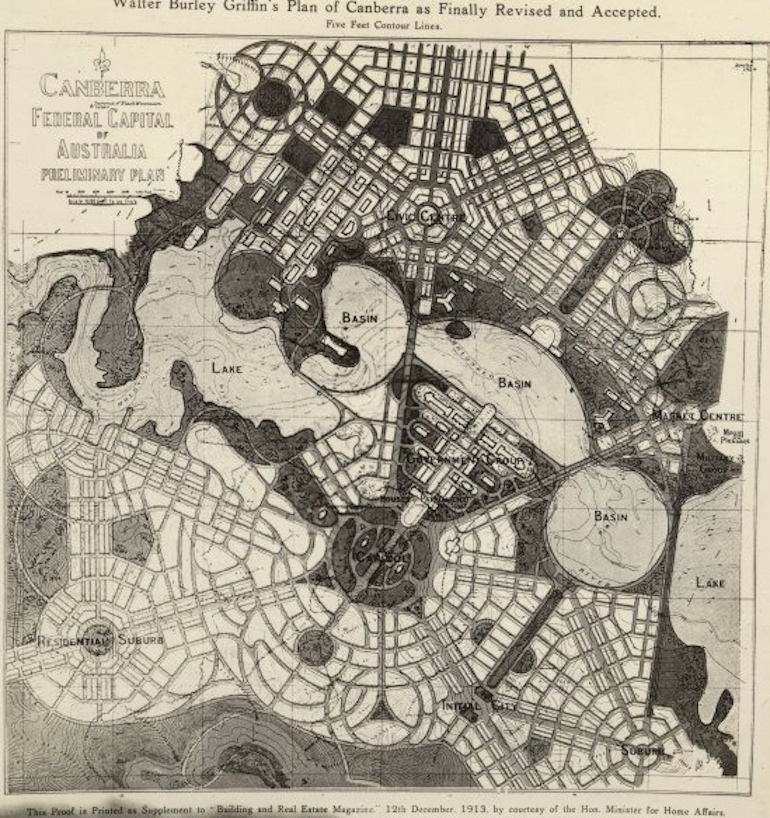 W. B. Griffin’s plan for Canberra, 1913. Photo Credit: © Public Domain via Wikimedia Commons.
W. B. Griffin’s plan for Canberra, 1913. Photo Credit: © Public Domain via Wikimedia Commons.
Parker and Unwin’s influence went wider: In 1911 W. B. Griffin won the design competition for Canberra, Australia’s capital city. It is reminiscent of Howard’s theories and Parker and Unwin’s practice.
The Canberra plan influenced Edwin Lutyens as he prepared designs for India’s new capital at Delhi. His Central Square in Hampstead can be seen as the precursor to the imperial statements he would hammer home in the subcontinent. Pinelands in Cape Town, South Africa, was designed by A. J. Thompson in an evolution of Ebenezer Howard’s principles, as was Frederick Todd’s Town of Mount Royal on Montreal Island, Canada.
Living in Letchworth
Letchworth’s ideals meant it attracted atypical residents: spiritualists, teetotalers, Esperanto speakers, and freethinkers of many sorts. It had one of Britain’s first vegetarian restaurants and what it still claims as Britain’s first roundabout, built “circa 1909” as the sign proclaims. There must have been an incredible pioneering spirit and considerable hardship as the town got going.
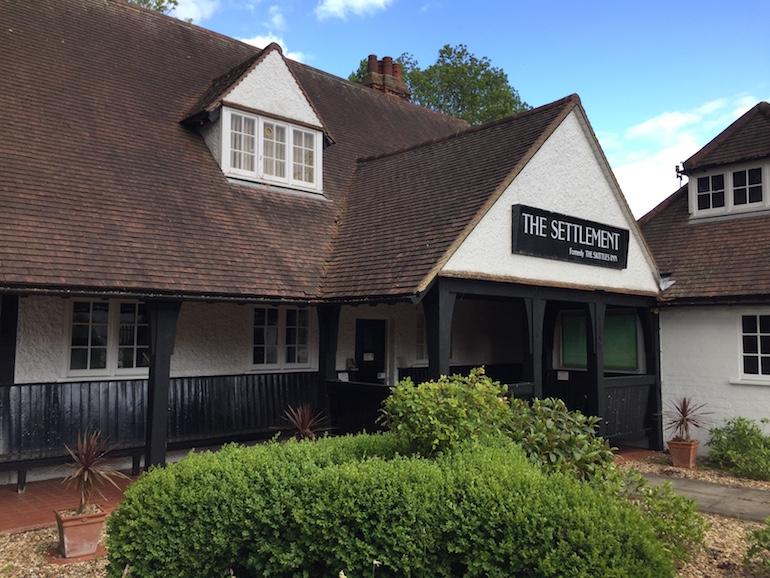 The Skittles Inn in Letchworth. Photo Credit: © Alex Hetherington.
The Skittles Inn in Letchworth. Photo Credit: © Alex Hetherington.
There was even a “pub with no beer”, the nickname for the Skittles Inn, a community hall with no alcohol behind the bar that is now an adult education centre called The Settlement.
Today there is a Heritage Foundation that protects the integrity of Letchworth’s visual landscape. Even though my home is on a 1970s housing estate, when I demolished my garage to extend my home, the new room had to have the garage door refitted to complement the look of the street.
Letchworth Garden City and Hampstead Garden Suburb today
Letchworth is a 30-minute train ride from King’s Cross, and Hampstead is a 20-minute tube ride on the Northern Line to Golders Green. Both are wonderfully preserved, full of character and accessible on foot.



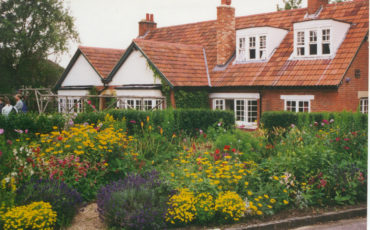



Leave a Reply